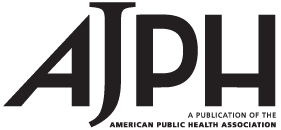In January 2020, BPI faculty and alumni Robert E. Fullilove EdD, Anibal Cortes MPH ’08, Richard Gamarra MPH ’14, and Hancy Maxis BA ’15 jointly authored an article in the American Journal of Public Health (AJPH) describing the value of college in prison and the unique position schools of public health are in to contribute to college in prison endeavors. The article, reproduced below, was first published here.

Accepted: October 14, 2019 Published Online: January 22, 2020
A vast body of research has demonstrated that mass incarceration has and continues to be a significant driver of health inequalities in the United States. The dramatic overrepresentation of African American men in jails and prisons is a stark reminder of the persistent inequities in education, housing, employment, and access to health care of the communities from which they were taken.1 The deprivation of educational opportunities is perhaps the most significant of the risks of incarceration, with approximately 68% of the incarcerated persons in state prisons in the United States without a high school diploma.2 Barriers to high school completion include the so-called school-to-prison pipeline, which is defined as the collection of local and national policies and practices that increase the odds that students will be involved in the criminal justice system as juveniles and later in life as adults.3 The overrepresentation of students of color in this pipeline suggests that one of the most important determinants of mass incarceration—education—is also the key to the development of significant solutions.
The relationship between educational opportunity and systems of incarceration is powerful. As noted in 2016 in a brief from the US Department of Education, since the 1990s, government expenditures for prisons and jails at the state level have increased three times as fast as spending on education at the elementary and secondary level. Moreover, it is reported that “young black men between the ages of 20 and 24 who do not have a high school diploma (or an equivalent credential) have a greater chance of being incarcerated than of being employed.” Efforts to increase high school completion rates alone have the potential to substantially reduce arrest rates in affected communities.4(p1)
We write here as alumni and as educators representing the Bard Prison Initiative (BPI), a program founded by Bard College in 1999 that, at this writing, has provided college degrees to more than 500 incarcerated persons in six correctional facilities in the state of New York.5 We also represent the students and faculty engaged with public health courses within this program. Two of us (A. C., R. G.) completed a master’s degree in epidemiology at Columbia University’s Mailman School of Public Health and are currently employed by the New York City Department of Health and Mental Hygiene. One coauthor (H. M.) is completing a master’s degree in health administration at Mailman, and another (R. E. F.) has been teaching undergraduate public health courses in the BPI system since 2010.
Our work stands in stark contrast to the spirit that animated the creation of the Violent Crime Control and Law Enforcement Act of 1994, which denied financial aid in the form of Pell Grants to all incarcerated persons. The debate that preceded the passage of the act was steeped in racist rhetoric that portrayed a system of US jails and prisons housing a population of persons of color who were being pampered and given unearned educational privileges with the hard-earned tax dollars of upright, law-abiding citizens. The loss of educational opportunities in prison only exacerbates the challenges of finding gainful employment upon release, as opportunities for the unskilled worker diminish with each passing year.1,6 The success of the BPI in financing college course work for incarcerated persons is therefore all the more significant.
The success of this program in creating college graduates committed to pursuing careers in public health cannot be underestimated. For many of us, public health research contributed substantially to our understanding of how the health of the communities to which we returned was significantly influenced by the loss of so many men and women to prison. Our mission upon our return home has been to maximize the ability of health care systems to invest and engage in the reform of the inequities produced by systems of incarceration and, in so doing, to increase access to resources that promote health and prevent disease.
Moreover, it is our considered opinion that expanding educational opportunities for currently and formerly incarcerated people within the communities where they live—or to which they will return—is an essential component of ending mass incarceration and of promoting public health. We are among dozens of BPI graduates who are working in New York City to engage young men and women involved in justice to avoid the depredations of prison life. We are credible messengers who have, in the language of our young people, “been there and done that.” Our lives and experiences upon returning home and earning graduate degrees have given us the right to claim that there are, indeed, alternatives to “doing time,” and that these are alternatives that can strengthen, not destroy, our communities.
The low rates of recidivism among BPI graduates—fewer than 4% have returned to prison—are often advanced as powerful arguments in support of college in prison. Though clearly an important measure of success, recidivism rates fall short as a meaningful gauge of the power of education to address the evils of mass incarceration.
Recidivism rates are a blunt measure of failure that cannot fully account for the qualitative, contextual issues facing persons reentering society. Returning to a community that is heavily policed, has high levels of crime, and is impoverished is, in too many instances, the foundation upon which the returning citizen must rebuild his or her life. Further, the lack of education renders the returning person uncompetitive in most areas of the job market and adds to the disorientation of adjusting to the sea shift of living “on the outside.” And with few services to ease the transition to normal life, recidivism is less an individual’s failure to reform and more the contextual, structural recipe for failure.
The triumph of BPI has been in rejecting the entrenched and Draconian way in which incarceration is viewed: prison is not an irrevocable point of failure, but a starting point. Education is not offered to overcome an individual’s shortcoming, but as an effort to combat social structures with origins that go back to the incorporation of slavery in three articles of the US Constitution.7 The prison classroom is not a human warehouse, but a space to educate and acculturate. And the results are evident in the outcomes: BPI students attend and have graduated from, among others, the City University of New York (CUNY), Columbia University’s Mailman School of Public Health, and other institutions of higher education.
Schools of public health are uniquely positioned to contribute to efforts that BPI and other similar college programs have created. Public health training “behind the walls” can create a public health workforce composed of directly affected persons who can be empowered to serve as change agents, capable of bringing accountability to public health systems and able to combat the encroachment of carceral systems on the systems of education that have failed so many in their communities. We are the living proofs of concept, and ours is an example that we believe is uniquely worthy of being emulated by colleges, universities, and graduate programs nationwide. As is often repeated in classrooms behind the walls, “If not us, who? And if not now, when?”
References
1. Western B, Pettit B. Incarceration and social inequality. Daedalus. 2010;139(3):8–19. Crossref, Medline, Google Scholar
2. Harlow CW. Education and correctional populations. Bureau of Justice Statistics Special Report. 2003. Available at: https://www.bjs.gov/content/pub/pdf/ecp.pdf. Accessed October 5, 2019. Google Scholar
3. Mallett CA. The school-to-prison pipeline: a critical review of the punitive paradigm shift. Child Adolesc Social Work J. 2016;33(1):15–24. Crossref, Google Scholar
4. Stullich S, Morgan I, Schak O. State and local expenditures on corrections and education. a brief from the US Department of Education, Policy and Program Studies Service. Available at: https://eric.ed.gov/?id=ED571899. Accessed October 4, 2019. Google Scholar
5. The Bard Prison Initiative. Reimagining college, transforming prison. Available at: https://bpi.bard.edu/the-work/the-college. Accessed October 5, 2019. Google Scholar
6. Lagemann EC. College in prison: a cause in need of advocacy and research. Educ Res. 2015;44(3):415–420. Crossref, Google Scholar
7. LaVeist TA, Fullilove M, Fullilove R. 400 years of inequality since Jamestown of 1619. Am J Public Health. 2019;109(1):83–84. Link, Google Scholar



